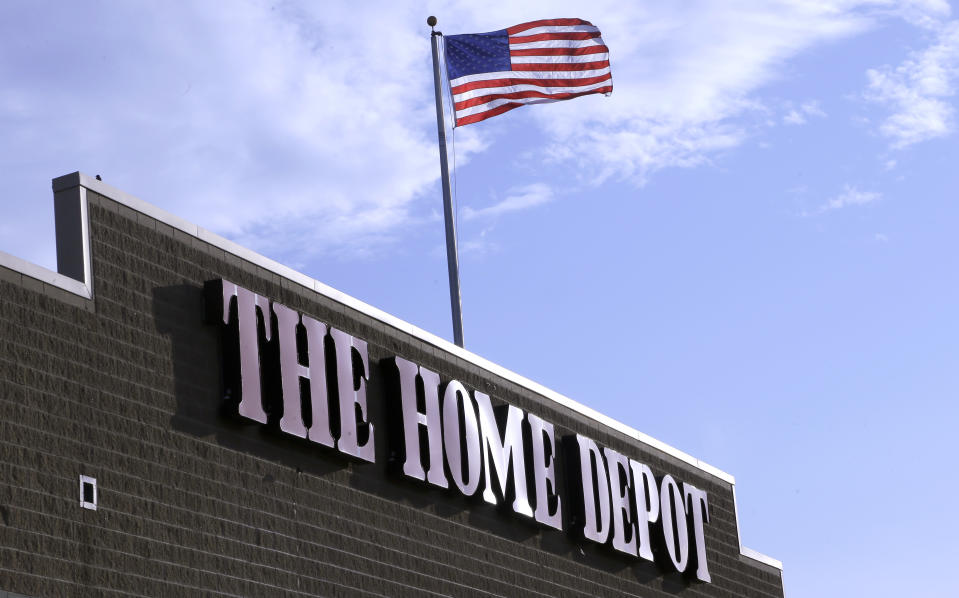Why Home Depot is leaving Lowe's in its dust quarter after quarter
Home Depot (HD) and Lowe’s (LOW) have both been beneficiaries of the improving housing market. But there has been a stark divergence in their results, with Home Depot consistently trouncing Lowe’s, including the latest quarter.
The difference largely comes down to how they serve the “pro customer.”
Home Depot has catered more aggressively to what’s known as the professional customer, which includes remodelers, general contractors and small business owners. In fact, 40% of Home Depot’s sales come from this customer category, which tends to spend more, take more trips to the store and conduct bigger projects. In contrast, Lowe’s only gets about 30% of sales from this category.
This is a notable gap, especially as Home Depot’s professional comparable sales growth was 9.6% in its most recent quarter compared to 4.6% comps in its do-it-yourself (DIY) category, according to Wedbush analysts. Meanwhile, in the first quarter, Lowe’s pro comps were estimated to be roughly 4%.

Importantly, the professional customer spends more on big-ticket items, which has dominated sales growth. This category includes appliances, roofing and special-order kitchens. At Home Depot, comparable store sales for purchases of $900 and above were up 12.4% last quarter. This has helped to lift overall results, as big-ticket items make up 22% of sales at Home Depot.
Serving pros while big-ticket items have been in focus as these areas are seen as more immune to encroachment by online retailers. Home Depot has continued to drive share in these categories with more exclusive products, more financing options, and more delivery alternatives. The company recently beefed up this business with its $1.6 billion acquisition of Interline Brands in 2015.
All of this is aided by a superior online strategy, analysts say, which is critical given increased concerns about Amazon (AMZN) encroaching on the home improvement category. Last quarter, Home Depot e-commerce sales grew 23% year-over-year and now account for 6.4% of total revenue. The company has emphasized its order-online, pickup in store option, with 43% of online orders still being picked up inside stores. Lowe’s online business, while also growing rapidly, represented just 3.5% of sales as of the end of 2016.
“While a rising tide in the category is benefiting the company, Home Depot continues to execute at the top of its game, driving market share gains and posting record results,” according to Wedbush’s Seth Basham.
Divergent sales results and stock returns
In the second quarter, Home Depot’s US comparable store sales came in at 6.6%. On the other hand, Lowe’s posted 4.5% comparable sales for Lowe’s second quarter report on Wednesday, a 210 basis point gap below Home Depot. Lowe’s has consistently sported a lower comps than Home Depot, including a 400 basis point (bps) gap in the first quarter, a 120 bps gap in the fourth quarter of 2016 and a 330 bps gap in the third quarter of 2016.
And investors have been rewarded generously. As shown in the chart below, over the last year, Home Depot has risen 11% while Lowe’s is down 2%.

The divergence is more extreme over a longer time-horizon. Over the last ten years, Home Depot has risen 363% while Lowe’s has risen 145%.
Please also see:
Walmart’s sales numbers make Amazon look small
Summers: Trump Cabinet resignations could unfold like ‘a dam breaking’
Howard Schultz: ‘I come to you with profound, profound concern’
HomeGoods is the most impressive retail story in America
Why Nordstrom is beating all of its department store competitors
Why CEOs should stand up to Trump

